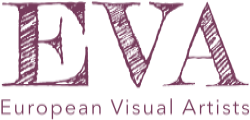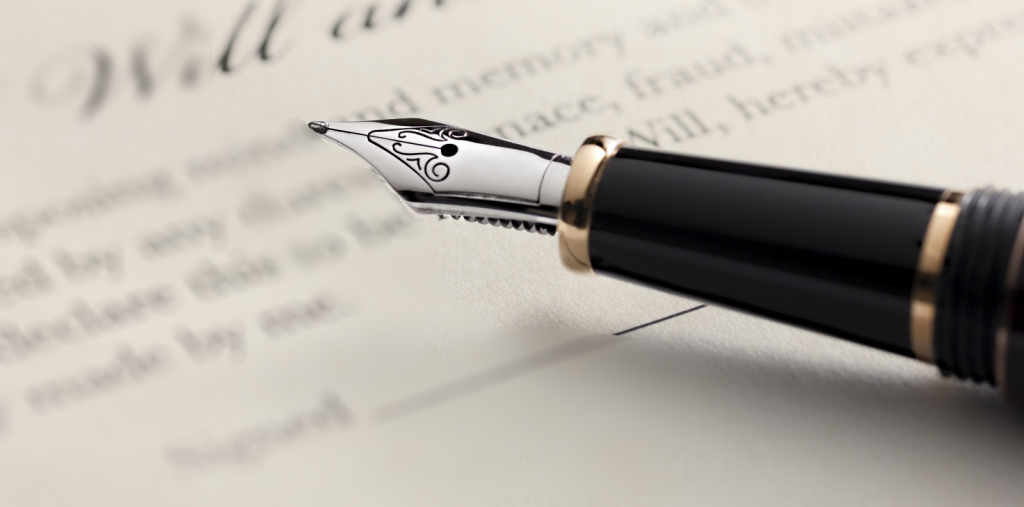CEPIC, EVA and EFJ jointly adress the Members of the European Parliament JURI Committee on the framing loophole
Brussels, 06/03/2018
To: Members of the European Parliament Legal Affairs Committee
Re. Framing and linking of images online- Draft Directive on Copyright in the Digital Single Market
The undersigning organisations represent photographers, photojournalists, painters, sculptors, designers, illustrators, architects and other authors of visual works.
Apart from their importance for Europe’s cultural diversity these works are also an important resource for cultural industries generating economic wealth. In 2012[1] the visual sector reached a turnover of €127, 6 bn and employed 1,231,500 people. However, very little of the economic value created is actually reaching the authors. This situation is worsened by the CJEU’s jurisprudence on framing/embedding which deprives authors of any control over the use of their works in the internet, once they have agreed to a single freely accessible presentation of their works online.
The ongoing legislative process on the EU Directive on Copyright in the Digital Single Market (further “the Directive”) is an opportunity for the European legislator to redress the balance providing for visual authors to receive a fair share of the profits made by others from the use of their works.
We believe that the jurisprudence set by the Court of Justice of the European Union on the use of framing/embedding technology must urgently be corrected by the European legislator.
Hyperlink vs Framing/Embedding
Usually, a simple hyperlink leads to a source website where – for instance – an image is displayed within its original context. This type of linking is generally accepted.
Framing technology on the other hand, allows to embed a part of one website (often an image) into another website, often within another context without prior authorization by the author. For the public, the fact that the image is “taken” from another website is invisible. But for the visual authors the use of framing technology has serious legal and financial consequences.
CJEU Jurisprudence on Article 3 Leads to Uncertainties for Authors
Article 3 of the EU Directive 2001/29 provides authors with a right of communication to the public. However, due to the jurisprudence of the CJEU, this right has been dramatically diluted by mixing the concepts of hyperlinking and framing.
In the absence of European legislation that would differentiate between simple links and links utilizing framing technology, the CJEU had to decide on a case by case basis (Svensson (C-466/12), Bestwater (C-348/13) and GS Media (C-160/15)). Each ruling has made the legal situation even more complex leading to factual exhaustion of authors’ rights.
In a nutshell, the CJEU held that framing/embedding work from another website only qualifies as an act of communication to the public (for which the author must grant permission) if new technical means are applied (regarding all internet display as applying the same technical means) or a new public is addressed (ruling that the linked website addresses the entire internet community if the access to the linked website is not restricted by technical means). In consequence all works which are freely accessible in the internet may be reused by framing/embedding by any third party for whatever purpose in whatever context (commercial, political, religious, pornographic….) – without any means of control of the original author.
The Mishandling of Visual Authors’ Works by Framing
Images make websites more attractive and increase their traffic. They contribute to those web sites’ income, for example through the placing of advertisements and the gathering of user data because such services generate higher income if the website has more visitors. This economic value of images depends on the different elements a visitor can see on a website, independently from the underlying technology. The invisible technology applied in the background does not justify denying authors a share of the profits gained. The European legislator’s intervention is urgently needed because case law by the CJEU is not the appropriate means to solve the matter.
The rulings have an impact on the number of quality works being available on the internet. Authors and rights holders are becoming increasingly aware that they lose control over their works after they have made them available for the first time. How fast and damaging a single snapchat posting of a photograph can become is shown in the recent Goldman vs Breitbart case.[2] Due to that situation, authors will become increasingly reluctant to permit a first display of images with high market value.
For picture businesses, it has already become impossible to sell exclusive licences. These licences are de facto breached as soon as the image is being framed only to be copied multiple times on the internet.
For collective management organisations the factual exhaustion has already become a detrimental element in negotiations of licences for digitisation projects of Cultural Heritage Institutions. Museums and archives do generally not apply access controls to their online displays of works, hence, a licence agreement would regularly result in all works being exposed to uncontrollable reuse – an intolerable risk for collective management organisations.
Clarify Article 3 of the EU Directive 2001/29/EC
We urge the European legislator to clarify Article 3 of the EU Directive 2001/29 in a simple and sustainable way, requiring in the baseline only a communication and a public.
Appropriate proposals have been provided by renowned academics[3] and to which we expressively refer to in our below proposal. The legislator should further clarify that non-framing hyperlinks leading to source websites are permitted. The European legislator must take the necessary steps to clarify the CJEU jurisprudence very soon and amend the proposal of the EU Directive on copyright accordingly in order to ensure that the interests of photographers and European visual artists generally are protected through a clarification of the making available right as it exists in article 3 of EU Directive 2001/29.
We therefore urge the Members of the European Parliament JURI committee to clarify the right of making available as part of their ongoing discussion on compromise amendments for the report on the draft Directive on Copyright.
The undersigned propose to supplement the existing amendments with a clarification of the scope of article 3 of EU Directive 2001/29 and the introduction of a new exception for non-framing hyperlinks:
– Supplement 1 (Amendment to Article 3 of Directive 2001/29/EC)
“Article 3 – Right of communication to the public of works and right of making available to the public other subject-matter
New paragraph 3:
- Any act consisting of giving access to the public to a protected work and/or other subject-matter shall constitute an act of communication and/or making available to the public.”
Article 3.3 becomes 3.4
– Supplement 2 (Creation of a new exception to Article 3 of Directive 2001/29/EC)
“Article 5a (new) – Hyperlinking
Member States shall provide for an exception or limitation to the rights provided for in Article 3 of the Directive 2001/29/EC in order to allow the communication to the public or the making available to the public of works or other subject-matter by means of hyperlink, provided that:
(a) the person posting the hyperlink has no knowledge nor reasonable grounds to know that the work or other subject-matter has been published without authority on the online service to which the hyperlink leads, and
(b) the work or other subject-matter is accessible without any technical or contractual restriction from the online service to which the hyperlink leads, and
(c) the hyperlink does not enable the work or other subject-matter to be directly displayed or broadcasted on the online service on which the hyperlink has been posted.”
CEPIC As the Center of the Picture Industry, CEPIC federates 600 picture agencies and photo libraries in 20 countries across Europe, both within and outside the European Union. It has affiliates in North America and Asia. CEPIC’s membership includes large and smaller stock photo libraries, major photo news agencies, art galleries and museums, video companies. CEPIC has among its members the big global players such as Getty, Shutterstock or Reuters. Through this membership, CEPIC represents more than 250.000 authors in direct licensing. The annual CEPIC Congress extends CEPIC’s network on all five continents. It is the largest global gathering of the international photo community representing 90% of the market worldwide. http://cepic.org/
EFJ The European Federation of Journalists (EFJ) is the largest organisation of journalists in Europe, representing over 320,000 journalists in 70 journalists’ organisations across 44 countries. It fights for social and professional rights of journalists working in all sectors of the media across Europe through strong trade unions and associations. It promotes and defends the rights to freedom of expression and information as guaranteed by Article 10 of the European convention on human rights. The EFJ supports its affiliates to foster trade union development, to recruit new members, and to maintain or create environments in which quality, journalistic independence, pluralism, public service values, and decent work in the media exist. http://europeanjournalists.org
EVA European Visual Artists (EVA) represents the interests of authors’ collective management organisations for the visual arts. EVA gathers 27 European collective management organisations in 23 countries. They manage collectively authors’ rights of 100 000 authors of works of fine art, illustration, photography, photo journalism, design, street art, architecture and other visual works. They issue licenses for analogue, digital and online use of works for museums, libraries, archives, publishers, producers of merchandising products and any other using visual repertoire. EVA members also manage the resale right of art works. They collect and distribute remuneration rights such as private copying and reprography and they are part of an efficient International network. http://www.evartists.org
[1] EY study “Creating growth, Measuring cultural and creative markets in the EU”, December 2014, page 10
[2] The US court decided and ruled that possession of a copy of a protected work doesn’t necessarily qualify the making available of an image, without the authors consent as an infringement. (https://www.eff.org/files/2018/02/15/goldman_v_breitbart_-_opinion.pdf)
[3] CSPLA, “Mission communication to the public right”, December 2016, Pierre Sirinelli, Josée-Anne Benazeraf, Alexandra Bensamoun and Professor Matthias Leistner, Closing the Book on the Hyperlinks: Brief Outline of the CJEU’s Case Law and Proposal for European Legislative Reform, E.I.P.R. 2017

